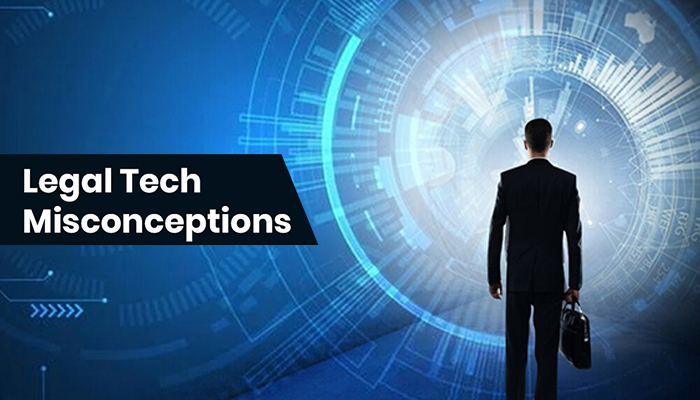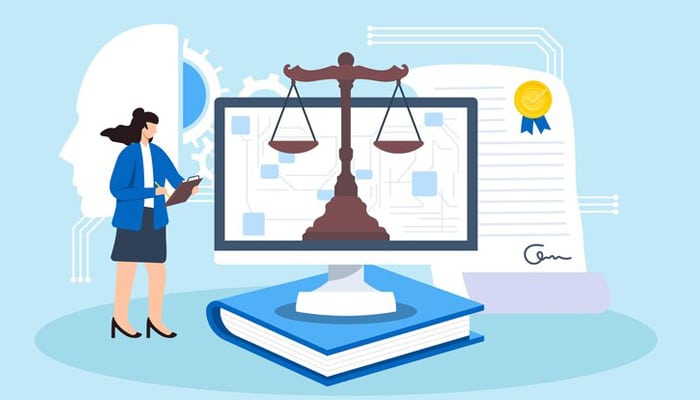Technological innovation in the form of skill sets, expertise and experiences perhaps is the only constant that keeps on changing across all kinds of business landscapes. The billion-dollar legal sector too is not an exception. Process improvements, client relationship management, and provisions for efficient legal services are primarily tech-driven in many legal organizations. The inclusion of a technological software has simplified and streamlined the legal process. The legal space as a result has become more competitive.
Once rapped as the ‘old school’ among other sectors, the legal space now has extended its arms to embrace digitization in its processes. Innovations in the legal industry have helped the law firms save money, time and resources. The close-knit legal sector is now a global enterprise capped to worth US$ 1011 billion by 2021.
Credits: Appventiv
With increased investments to the extent of 713% as reported by Forbes in 2018 followed by an expectancy of a tripled technological budget by 2025, it’s time for the law firms to decipher facts from fiction, discolor myths with truths.
However, in spite of the improved scalability of legal tech solutions, not all law firms are keen to explore the carousal of legal technology trends – thanks to the misconceptions that shroud the digital transformation of the legal space.
Myth #1: Legal technology solutions require high investments
When you say that you require high investments for adapting legal tech solutions, you seem to be simply unaware of a large number of free and trial-period version tools that could prove highly effective for your processes. The trial period lets you figure out its worth to your firm before you accept or reject it. Most of these tools are designed to be cost and time effective and hence, aid in profiting.
Myth #2: Ineffectiveness due to multiple touchpoints of law
The law firm technology trends are aimed at augmenting the efficiencies, abilities and accuracies of legal professionals. Delays in tasks are curtailed to a large extent with technological automations. Most importantly, on the threshold of a digitized economy, we can only expect tech-savvy professionals seeking fruitful virtual outcomes. The human conversation space of a legal professional would remain intact but the functional areas like preparation of documents, signatures, billing and inputs of the clients can be done effectively with tech support.
Myth #3: Unresponsiveness of clients towards technologies
It is true that on the face of a completely digitized makeover, older generation who have not been very conversant with technological innovation find it difficult to perform. But to guarantee client satisfaction, it is imperative that their distinct perspectives are catered to adequately. In no manner whatsoever the human aspect of the law services would be made inaccessible just because technology would dominate the workspace. In fact, the inclusion of AI, add-ons and plug-ins will, in turn, ensure unchanged high-quality deliverables at a reduced cost.
Myth #4: Innovation in the legal industry enhances cyber risks
Cyber risks can be mitigated by the introduction of strong policies, updating privacy settings, and devising precautionary measures by individual law firms. It is also imperative that the professionals working in a digitized setup be provided training and education about the innovative practices. If you possess a proper understanding about the implication of legal tech solutions, you can avoid erroneous and risky actions.
Myth #5: Challenges of implementation and training
Training in legal technology trends is far from being challenging since the installation of billing cycles, e-signature and contracts analysis is relatively easy and requires no training. However, you must have a vivid understanding about the process of integration of tools with firm, cloud and case management and also update yourself about the other related tools. Training is a must-have practice that should be done effectively, so that legal professionals can adapt to the improved solutions within the least possible time.
Myth #6: Not-so profitable for attorneys
Since the law firms and the legal professionals follow the process of billing the client on an hourly basis, introduction of a tech solution is bound to lessen the work hours and dig a hole in your pocket. What cannot be overlooked, however, is the fact that the legal tech solutions guarantee an unmatched efficiency to the processes, thus ensuring a better rapport between the client and the attorney resulting in a profitable outcome. Being time efficient, legal tech will leave more time with the legal experts to focus on tasks that require attention and are crucial for the profitability of their enterprise.
With these myths getting busted, let’s now look at the possibilities that the emergence of law firm technology trends is likely to bring to the table.
Significance of legal technology solutions
You cannot negate the significance of legal tech solutions in streamlining the delivery of legal services involving complex elements of audit, litigation and contract management. The legal technology trends have indeed given an ambitious drive to the law enterprises across the globe. They are now faced with an uphill task of transforming and updating piles of paperwork and processes accumulated over decades into extensive and innovative digital platforms.
The tech solutions are being worked upon to ensure a strong shield of security and privacy so that there is increased visibility alongside effective automation. Digital transformation in legal industry is thus, seeking to intersect and juxtapose technology with law, product development and customer services by delivering effective solutions that sets the pace for an automated and futuristic legal space.
Technological innovations in the legal industry can be extremely effective in maintaining security protocols. Since the law firms and legal professionals handle sensitive information and data almost regularly, security breaches of any kind could prove suicidal. Processes like activity monitoring, third-party vendor management, extensive employee background checks, data sensitivity analysis, and effective data encryption can be implemented to strengthen the data security stature of the legal firms. It is mandatory to maintain compliance to ensure confidence of the client.
The legal sector processes would become more convenient and easier-to-use with the introduction of law-based software and mobile applications. These legal technology solutions will help in establishing a connect between the users and the legal professionals. This will ease the research work of the lawyers and help them communicate effectively with their team and clients in real time.
Incorporating the law firm technology trends will be helpful for lawyers in collaborating through the use of MS Teams, Google Docs and Slack. Drafting petitions and discussions on vital aspects of cases could happen remotely and thus, legal services and client access would no longer remain bound by geographical boundaries.
Processing vital information as calculations and error resolution would take much less time on legal tech software than when done manually. Thus, high turnover of cases can be managed efficiently.
Internet has long become a potent medium of research for the legal professionals across the globe. However, they still cannot give up on the old habit of accessing hard copies of data and information. This often delays the research activities. Through the use of appropriate tech research solutions, legal professionals will remain updated about new regulations, irrespective of their location.
To widen the scope of using legal tech solutions, many firms have started training the in-house bench of legal professionals about legal technology trends. You can easily hire dedicated legal assistants from India to facilitate the use of technology in your existing operations. The decision to hire dedicated legal assistants from India will help you reap immense gain in terms of understanding and implementation of tech solutions within your organizational processes.
Challenges that confront legal disruption
The path to legal disruption is hindered broadly by three major obstacles:
- Employees do not have the bigger picture in front of them
Most of the legal professionals do not have proper understanding about the significance and appropriate use of technologies to turn in better outcomes. A premonition of forced unemployment also lurks in their minds in the wake of mechanization of the law sector. Researches have shown that around 30-40% of the legal professionals are clueless about the tech solutions used in their law firms for better outcomes.
- Disruption in the organization
The prevalent business model of the legal sector has turned a half circle in face of the emerging legal technology solutions. The modes of attracting clients, processing information, and earning revenue has undergone a complete makeover. This has posed a severe challenge to the legal organizations. Issues related to technological interference in conducting daily tasks, determining the use and scope of different kinds of technologies in easing the processes, and following practices of a not-yet-proven model of business have been a major concern. Consequently, almost 34% of the law firms are wary about adopting the legal technology trends simply because of organizational issues.
- Financial Constraints
The issue of expenditure related to the adoption and future development of legal tech solutions has been a major impediment in the path of accepting the legal disruption. Although such an expenditure would ensure heightened client satisfaction by turning out better outcomes, it seems hard for the attorneys to put such apprehensions to rest. Impact of incorporating technology is thus being overlooked by almost 30% of the law firms.
Wrapping it up
The pen-paper manual processes have bogged down the legal sector for far too long. The lure of legal tech looks promising especially when it can help the law firms save valuable money, time and manpower. The possible element of hindrance to an automated system is the imminent change that is being seen with a lot of apprehension. The legal firms tend to believe that the task of legal professionals is complex, special and sophisticated, and is beyond automation. It is therefore, most important to understand that the digital transformation in the legal industry can only be embraced when tech solutions assure their presence with the law firms on the same page in the process of its implementation and generation of an enhanced level of client satisfaction.











